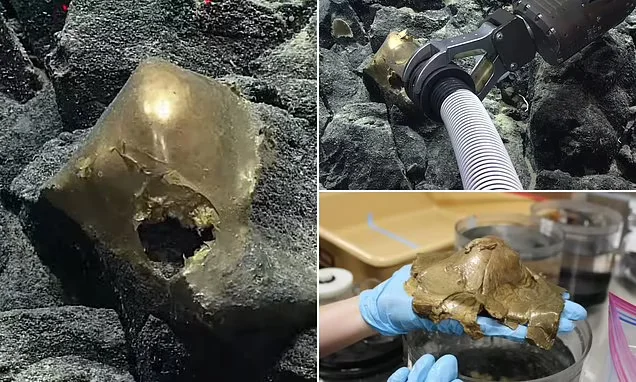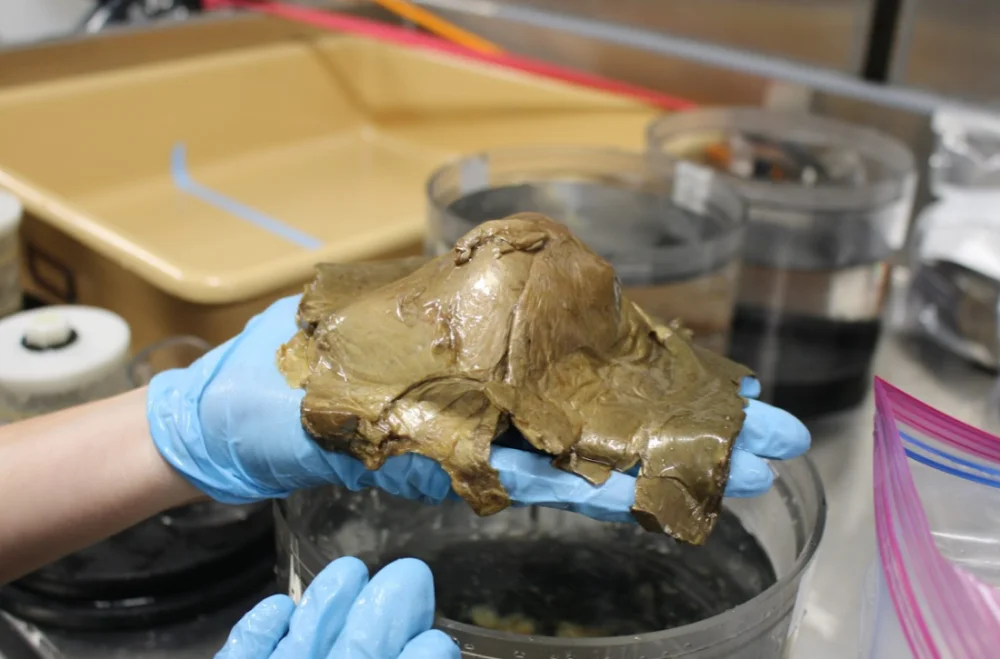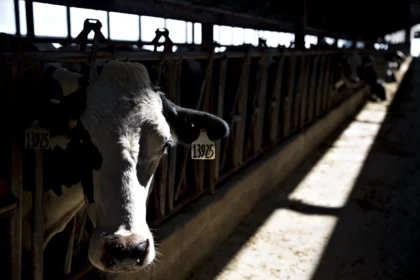Marine scientists are scratching their heads over a truly mystifying find—an unusual golden object discovered resting on the ocean floor near the coast of Alaska. This enigmatic item possesses a shiny, metallic exterior and features a small opening, hinting at the possibility that it might be an egg from a species hitherto unknown to science.
The astonishing revelation came to light when a team of deep-sea explorers, representing the United States National Oceanic and Atmospheric Administration (NOAA), stumbled upon this perplexing discovery just last week. This captivating discovery has been reported by The Telegraph.

While live streaming the remotely operated dive, which took place an astounding two miles below the surface near a dormant underwater volcano, one of the scientists involuntarily exclaimed, “There seems to have been an attempt to enter or exit it.” Adding to the conversation, another marine expert cautiously remarked, “I just hope that when we investigate further, we won’t inadvertently provoke something to emerge from it. It’s reminiscent of the initial scenes of a horror film. When our collective expertise fails to identify it, you know it’s something truly extraordinary. What kind of creature could produce such an unusual egg casing?”
To retrieve this peculiar golden “egg” from its rocky surroundings, the research team employed a robotic arm. However, what they found didn’t align with their initial expectations. Instead of resembling the texture of a shark egg, the object appeared more akin to skin tissue or silk. To unravel the mystery, DNA testing is now underway to determine the identity of this enigmatic artifact.
While an egg casing remains a plausible explanation, as several deep-sea fish, including sharks and rays, are known to deposit similar structures in such habitats, experts remain flummoxed by its origin. The list of speculations ranges from a new type of coral to a Pacific barnacle or perhaps even a sponge.
This unidentified object’s discovery unfolded within the framework of NOAA’s Seascape Alaska 5 project, a comprehensive study of the seafloor located approximately 250 miles south of the Alaskan coast, a project that commenced on August 23. The team’s mission involves collecting samples of organisms dwelling in deep-sea coral, sponge habitats, and even mud volcanoes. This endeavor is driven by the understanding that a substantial portion of marine life remains uncharted territory.
Kerry Howell, a distinguished professor of deep-sea ecology at the University of Plymouth, has aptly described the object as “weird.” She underscored the excitement surrounding the forthcoming analysis of the sample, acknowledging that the depths of the ocean harbor countless undiscovered species. Therefore, it is entirely plausible that this extraordinary discovery could be linked to a previously unknown and fascinating life form.




